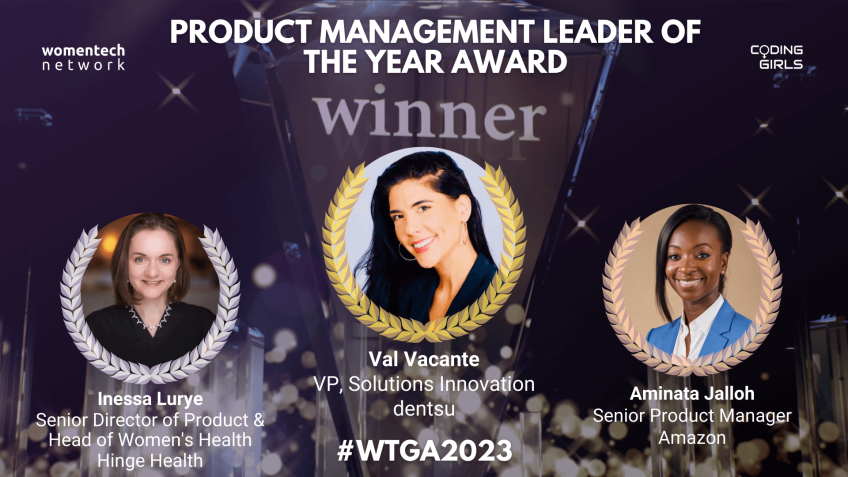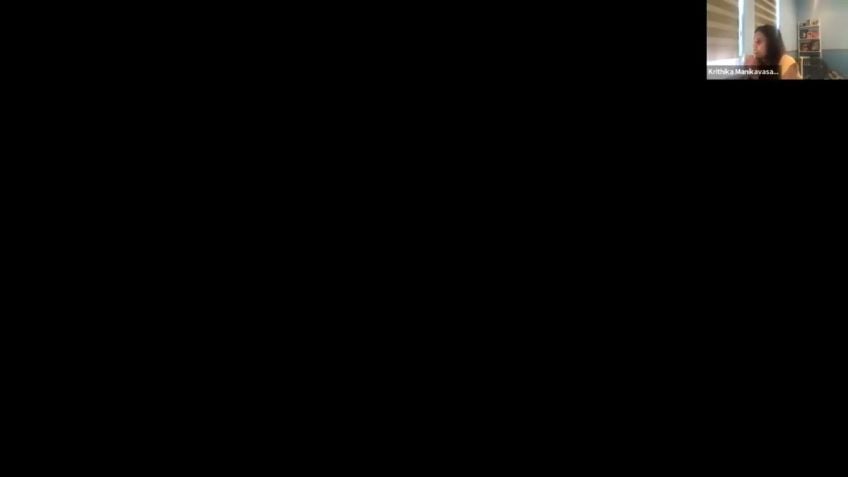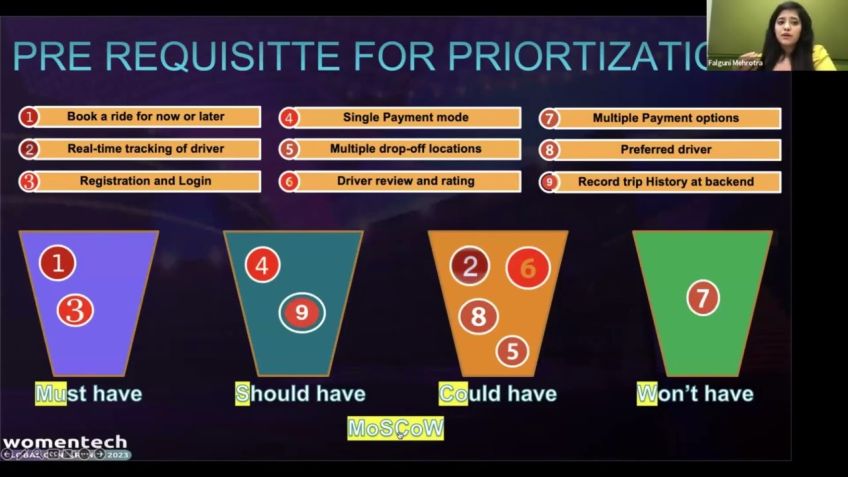Caroline Hubbard - How To Build Thoughtful In-App Experiences That Meet Your Users Where They Are
How to Build Thoughtful In-App Experiences
Building thoughtful in-app experiences involve understanding the needs of your product users and positioning your product uniquely to serve those needs. This goes beyond metric-performing products to creating experiences that keep the user's emotional state in mind at every step of the journey. To do this successfully, strategy must be outcome-focused rather than output-focused. Achieving these outcomes often involves generating product hypotheses, synthesizing user insights, and translating them into actionable features users will love. In this post, we'll delve into these concepts from the experiences of Caroline Hubbard, a Growth Product Manager at better.com.
Understanding Your Users
As a product manager, your role is to help identify the job that needs to be done for a user on your app or site and anticipate their future needs. In crafting your experience to help serve these needs, an essential starting point is understanding who your users are and how your product is uniquely positioned to meet their needs. The best way to do that is to align every feature of your product with your company's mission and differentiate your company from others. All these should be focused on delivering outcomes and solving users’ initial goals.
The Importance of Outcome-focused Strategy
Employ a strategy leaning towards achieving desired outcomes rather than focusing on outputs. Prioritizing outcomes over outputs prevents the “watermelon effect” - everything looks green on the report, but your consumers are not satisfied. Therefore, aim for user-focused outcomes which open up a broad spectrum of potential product solutions.
Building Successful Products
Building successful products and providing sophisticated, elegant experiences for users involves leading an outcome-driven discovery process in collaboration with your design and engineering teams. Start this process by gathering quantitative and qualitative data, developing hypotheses, and prioritizing them based on their potential impact and the smaller efforts needed to test them. Continue testing, iterating, and improving upon your MVPs with less risk and adopt an outcome-focused strategy to drive product adoption.
Decoding the Success of Thoughtful In-App Experiences: A Case Study
Applying the concepts explained above, let's consider one of Hubbard's successful projects: the jobs board at the Wing. They noticed that postings were declining and tackled this problem by adopting an outcome-focused strategy: how might they encourage users to post more jobs? Analyzing user behaviors, they discovered four main approaches to increase job postings:
- Enabling users to post more than once: Initially, users could only post one job at a time. Removing this restriction instantly increased the volume of posts.
- Allowing more posting use cases: They noticed people using the job board for social asks and offers - not just for job postings. This insight led to the creation of additional use cases, such as offering one's services.
- Making posts more discoverable: Posts could be tweaked to align better with the users' needs at that time, leading to more engagement.
- Clarifying the value of posting whereas other sites: For instance, the pre-vetted opportunities that the platform provided were more encouraging to women, thus differentiating the platform from others.
This small change, modifying the feature headline to "bulletin board" and changing the sub-copy, led to a 10% increase in post view-to-message conversion rate.
Conclusion
Building thoughtful in-app experiences is centered on understanding the core needs of your users and customizing your products to meet those needs. The emphasis should be on achieving desired outcomes rather than the outputs. Lastly, successful products are a result of incorporating all aspects of your product in smaller iterations, hence less risk. By following these guidelines, you'll be able to create experiences that truly resonate with your users and keep them coming back for more.
Video Transcription
Welcome to this session on how to build thoughtful in app experiences uh that meet users where they are. Um So my name is Caroline Hubbard.I'm a growth product manager at better.com, which is a digital homeownership company that's aiming to disrupt the whole antiquated mortgage process, streamline it and make it a lot easier to close on your dream home. Um Prior to that, I worked at another start up based out of New York City called The Wing, which was a network of community and workspaces designed for women whose mission was uh the social, political and economic advancement of women. And prior to that, I worked at linkedin um in a variety of roles. I was in a rotational program um as a strategy and analytics analyst and got exposure to variety of teams including the video team, the product growth team, um and, and business operations. Um So today for the agenda of what we're gonna cover, I wanna start with understanding, helping you understand who your users are and how your product is uniquely positioned to serve their needs, then we'll talk a little bit more about the importance of generating product hypotheses and synthesizing user insights.
And then lastly, we'll talk about how to translate those insights into actionable user narratives and features that your users will love um that they'll keep on coming back for et cetera. So uh I think we always as product managers start off with this really lofty goal of building a thoughtful product experience. And we don't often take the time to define what thoughtful means. And because we don't do that, we often begin to conflate thoughtful with performance, right?
Have I built a successful product that is driving x amount of volume in our metrics. If it's doing, if it's performing well, then it must be something our users love. And I think that's a common fallacy and something that actually prevents us from delivering on outcomes for our users. And so in my experience, what I've come to define a thoughtful in app experience as is one that keeps the user emotional state in mind at every step of the user journey. So as a product manager, it is your job to help identify the job to be done for that customer. You know, what they've come here specifically to your site or to your app to do uh taking that information into account and making sure that they get navigated to the right experiences to help accomplish their goals on their timeline and taking it a step further anticipating what their future needs might be and making those recommendations so that you're always continuing to surprise and delight users um and have them come back into your experience.
So for today, rather than sort of share a recipe guide or uh you know, steps on to how to build a thoughtful user experience because it's going to be different depending on what your company does and who your users are. I thought I could do um what I do best, which is just share my stories, my experiences, my successes and failures, navigating these processes in the past and what I've learned for them. So the first uh the first experience I want to talk a little bit about is uh from my time at linkedin when I was working on the video team and the video team um was it was a new concept at linkedin. At the time, we were introducing the ability to embed native video on the site and to upload posts. But if we were looking at the industry wide landscape, you know, Facebook, Instagram, um Snapchat, even Twitter. Now we're moving towards this uh ephemeral content sharing feature at what we know today as stories. And so in order to kind of continue to hit an industry standard benchmark, we decided that we wanted to create something similar because that was the new way that people were engaging.
That's how they were sharing information, it was really fun. Um And that was the way to drive a daily use case. So we started with this question which again, you'll see how uh we need to, we have to shift to becoming more outcome focused versus output focus. As I mentioned from, from the thoughtful user experience uh section, we started with this really narrow question of how do we build an ephemeral video sharing feature that will be engaging for a subset of users? We're currently neither active nor well represented on our platform.
And so as you can see here, we kind of started solution first rather than evaluating the job to be done for the user and then crafting an experience to help them serve their needs. And at the time who uh the the demographic of users that we saw using this feature widely was, you know, younger folks, people who were college age or teenage age, um who knew, how knew kind of the context of how to share what to share um and who to share it with. And that demographic was not on linkedin at the time, right, linkedin careers towards a more professional, older age range of folks. And so we kind of faced two uphill battles of a building this new feature, seeing if it would work, seeing if people would adopt it, but also b getting the people who we thought would use this feature onto the platform in the first place. So what ended up happening is I ended up developing webinars and one pagers to not only explain what the feature there is, but to actually pitch linkedin for students. And I do not recommend this approach. I recommend building for who's already there and trying to solve their problems.
Um And so what we entered into is kind of these tutorials where we're, we're trying to instruct students on the value of building a professional brand at an early age and connecting and building your network and building your resume. And then on top of that, we were trying to convince them to create a video about all they're doing on campus, share that with their network as a as another way to sort of stand out and potentially get internships or other professional opportunities in the future. So how we pitched this to them um was this linkedin Campus Stories Beta feature where we gave the following use cases for, you know, why you should create video, um how you can sort of promote yourself on linkedin and who to connect it to. So the use cases of this were, you know, for building a professional brand, solidifying your identity, showcasing your skills and your experiences and your passions and then reducing all of that down to uh a 22nd clip that you could share with your audience. And if you've been following along, this is a very daunting thing to do, especially for college age students who, you know, don't necessarily have an idea of what they wanna do professionally or um even have an idea of, you know, what skills they might be being able to bring to the table.
So initially, when we launched this feature, it did work, it got a few hits, but it did not have sustained adoption overall. And that is because we identified that it did not have product market fit. It wasn't solving a specific need for these students and B it was too much of an uphill battle to convince them to choose to join, to ch to convince them to join the platform in the first place. So if we have to take a step back and, and press reset on this, the question that we probably should have started with is that if we want to target students, right? How might we provide students with the necessary tools, knowledge and resources to build a professional brand so that they can grow their network and get access to opportunities. And here is the difference between being output focus versus outcome focused starting with this research and, and, and, and product question, we have the user need in mind at every step step of the journey. And when we approach it this way, the solutions that we can deliver can be a lot more broad, a lot more vast, but more importantly, a lot more impactful in terms of solving their, their initial goals.
So that was the first sort of experience I had where we invested a lot of time in building a product. Um a lot of resources in building a product that ultimately didn't have product market fit. Um And this was my first experience of learning to actually strategize and approach uh products in a outcome driven way. So to get back to the agenda of, you know, how do you begin to understand who your users are and how you can best serve their needs? Now, this is a question that a lot of companies, you know, haven't, haven't answered and are still figuring out. Uh But the important thing here is that at the highest level, your users should be a reflection of your company's mission in action. So your company has identified a specific niche or, you know, value crop differentiator that they are delivering on for their customers. And so everything that you do coming from the bottom up should be in service of that mission. Um So your strategy, the product objectives that you decide on with your teams should ultimately ladder up to that outcome that you're delivering. Um And to how your company is differentiated from others. Um And each feature should lot up ladder up to a specific business objective that helps the company deliver on its purpose and value to users.
So for example, when I worked at the Wing and the wings mission was the social, political and economic advancement of our um of our users and our members, every feature that we had in this digital membership um laddered up to each of those goals. So, for example, we had a jobs board that could help our members connect and share opportunities. We also gave them templates on how to write jobs in a non-biased way because we know that traditionally job um postings are written in ways that are discouraging for women. Um We had messaging features that allowed them to connect. We had event features that allowed them to uh share knowledge and bring in various speakers and politicians and leaders, business leaders from across the board to, to share that information. So it was very clear how each of the features that we enabled and built in this digital membership laddered up to our goal and we got a lot of adoption, a lot of interest in this product. And it was because it was very clearly aligned with our brand and who we are and the next phase of this. So once you've identified sort of the features and the opportunities that can help deliver on these outcomes in the strategic planning and road map building process, it's important to learn to prioritize outcomes rather than outputs.
And the consequence of not doing that is you get to something called the watermelon effect, which is all your reports are green. You know, you've delivered on the metrics, you've hit your volumes, but your consumers are turning right, they're not coming back. Um They are giving negative feedback because you haven't actually helped them accomplish their goal. And so let's say you have a goal of, you know, driving x percent lift in the number of users who consume watermelons daily. That is a output focused objective, a more outcome focused objective would be let's actually enable users to have daily access to watermelons so that they can remain satisfied and healthy. And so the outcome is user focused and not to mention if the outcome is that we want our users to remain satisfied and healthy, that actually opens up a broad spectrum of what your solutions could be. It doesn't just have to be watermelons, it could be a whole fruit basket, it could be a nutrition plan, right? The opportunities become endless when you sort of unbox um and and unlimit uh the potential product solutions that you can deliver for your users. So that's why it's very important to be outcome focused rather than output uh output focused. Um And lastly, um something that I noticed that that really helps to deliver sophisticated and elegant experiences for users is leading an outcome driven discovery process in collaboration with design and engineering.
Um a lot of times we think that the product managers are the sole owners of the product and, and that shouldn't be the case, the people who are designing the product, the people who are actually building the product should be as equally as invested in the outcomes that you're building.
And um and the experience that you're building for users, they should have a similar sense of ownership for both the metrics and the data side. But they should also be similarly as interested in in the verbatim and the feedback that you're receiving from users. And so how I've approached uh this collaborative process in the past is actually bringing design and engineering into the strategy and getting their buy in. Um and together gathering both qualitative and quantitative information to understand, you know, how are users performing right now, what are some of the goals and the friction points that they have from there together developing hypotheses with design engineering stack, ranking those based off of the opportunity size and how much, how many people you think that uh you can solve this for and then always choosing to tackle the smaller efforts with the larger values first.
And if you approach this process very collaboratively, not only will you come out with more sophisticated products and more elegant experiences, but you'll maintain a sense of morale on the team, everyone will feel equally invested. Uh You'll create more psychological safety for people to feel like they can share their ideas and continue iterating. So all in all it's a win win um to approach it in an outcome driven discovery process with design and engineering. So I want to share another experience that I had that was different from a linkedin experience and this is more of a a positive win. So at the wing um with the jobs board, as I mentioned, we were noticing that people were beginning to not post as many jobs um before as they used to. So we, we have this goal from a business perspective of like, how do we increase the volume of posts that people are seeing? Uh We started with this question of like, how might we encourage users to post more jobs to the jobs for it is less stale and able to connect job seekers to more opportunities.
So that was the outcome that we wanted to deliver for the users and going back to this process of like in collaboration with design and engineering, taking a look at what people are doing and analyzing user behavior. We found, you know, four things, four main themes um that potentially help us move forward. One was enabling folks to post more than once. We had realized that when we introduced this product in the V one version, we had restricted job posting to only one post per user so that we could do more quality control. So a quick win, there was just removing that, that lock on the amount of posts and automatically you get more users. The second was enabling more post use posting use cases. We're also starting to see really informa uh really interesting trends where people weren't posting things specific to actual jobs or roles. People kind of started expanding the use cases into more social aspects. Like there was one user who asked for a drinking buddy or a roommate and we started to see that, you know, there might be opportunity for a general marketplace and an ask and offers type of type of feature where people can connect like minded people to the things that they need.
The third thing that we uh found could potentially help, this is just creating clear points of entry and discovery. And the last is just helping people really understand the value prop of why to use our job board versus other job boards. So for example, the fact that our the opportunities that are posted are pre vetted and they are also written in a way that are more encouraging to women um automatically kind of sets the differentiation between why folks should continue to focus on us versus other sites that they might be using.
So we started, you know, from this hypothesis, uh if we enable users who are, who are hacking the job board to meet needs, not specifically related to job seeking or hiring, we will unlock additional use cases, increase engagement and gather preliminary insights on the demand for a general marketplace.
So from there, we kind of broke it down into four different user personas or or call or um use cases. So those new use cases became offering yourself as a service. For example, I'm an accountant, I'm seeking business. I can help you one off favor or asks. So people could ask like, hey, I'm doing a research study. I'm looking for participants call to action. Hey, join this uh volunteer program and then social post kind of like the one I mentioned, um I'm looking for a drinking buddy. I'm looking for a coffee buddy or a gym accountability part uh partner. And so we took those new expanded use cases and transform them into a new user story, which was as a member of the wing. If I want to offer myself as a service, ask the wing community for a favor or present an opportunity to collaborate with wing members, I wanna be able to create a post using the job board in a format that is clear, actionable and amenable to my needs. And so the end um the end result of this new user story was this. So we started here on the left with jobs for you. This is what the jobs board does and because we were expanding the use case beyond jobs, we uh a very quick MVP was to just change the feature headline to bulletin board.
So it was more general and change the sub copy to see what your fellow members are posting about and share your own asks and offers. And so we went from just having um you know, job related posts to like engineering manager at Lyft software engineer at the Wing to Hebrew tutor French tutor, let's talk about menopause. Um And this small change, this headline change um led to a 10% increase in job in post view to message that conversion and the hacked posts that we saw like that weren't directly related to professional use cases. They only made up around 12% of all posts that we had on the sport, but they drew 10% of all views. So we knew that there was a lot of interest here and a lot of, um, a lot of potential to expand this to make it more interesting to what their needs are at the time. So to, to wrap up um I love this graph, I mean, I show this at, at most of the talks that I do, but the best way to get to um an outcome led product vision right is to continue to test and iterate and validate on your future mvps.
As you saw in this last one, like this was a a very quick fix um MVP version. But the goal from here was, you know, once you get into post creation, continue to segment the types of posts that we make, so it's more amenable to the use case. So there's a lot of opportunity to build on that. Um But as a general rule of thumb, you kind of don't want to start with this top section of investing a lot of time building a cake from scratch, right? There are different ways to test all of the values and experiences that you're building in smaller ways that can get you to your end results a lot faster and for a lot less, less, a lot less risk. So instead of kind of starting with the actual cake, then making the filling, then making the icing, try to incorporate all of the the goodness aspects in a smaller form to start with a cupcake, then graduate to the cake and then you ultimately get to a wedding cake. And when you're incorporating all those elements of goodness, just in smaller iterations, it's a lot less riskier way um for you to validate the goodness that you're delivering and um make progress as you go. So with that, I will uh close out. But thank you guys for joining.
And if you have any questions, feel free to reach out.





